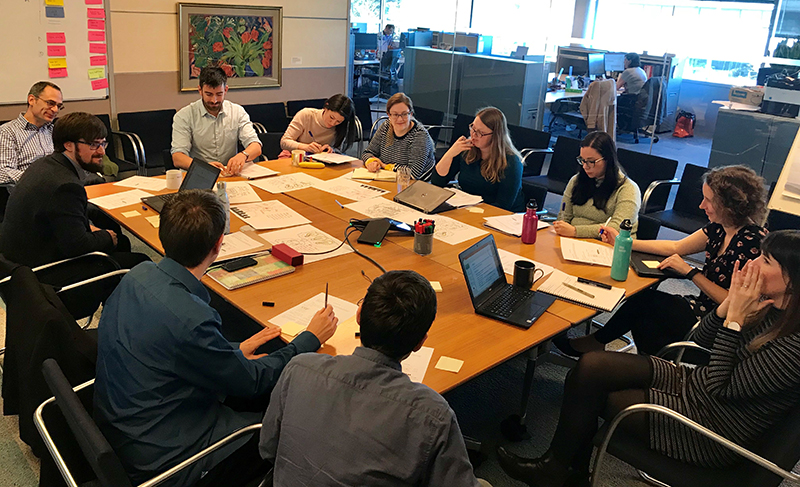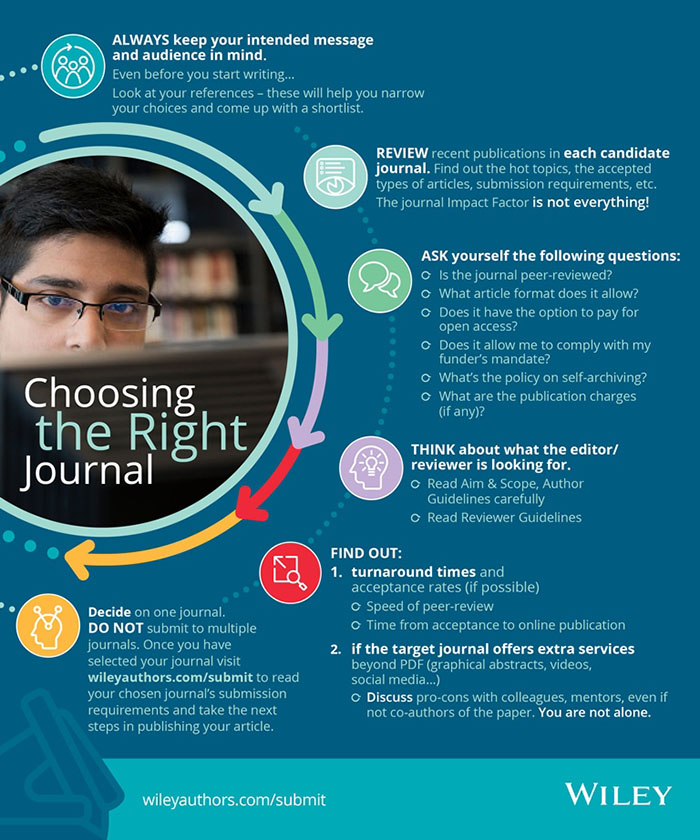how-important-is-the-impact-factor-to-the-materials-science-community
July 09, 2020
The field of materials science has seen remarkable growth over the last two decades. As governments around the world focus efforts on transitioning to clean economies, materials scientists have come to the fore, developing more efficient ways to use finite resources, taking advantage of renewable energy sources, and tackling other major socio-economic challenges.
This explosion in growth is reflected in the research output of the field. According to Clarivate Analytics, in 2003 around 29,000 research articles were published in multidisciplinary material science across 177 journals. In 2019, 129 000 research articles were published in 314 journals. More than four times the number of articles were produced in 2019, than a mere 16 years earlier.
In such a rapidly expanding field, it can become very difficult for researchers and librarians to stay informed of the most important developments. However, there are a range of metrics that can be used to help direct attention.
Perhaps the three most common metrics used in materials science are the journal impact factor (IF), citation count, and altmetrics. While the latter two focus on the reach of a particular article, the first provides a measure of how often the recent publications of a particular journal are cited. This allows for a rough comparison between journals within a particular field.
Wiley’s Materials Science portfolio is well-represented within the newly released Impact Factor List: Advanced Materials (27.398), Advanced Energy Materials (25.245), Advanced Functional Materials (16.836), Advanced Science (15.840), Small Methods (12.130) and Small (11.459) are all well-respected journals and the resulting impact factors suggest that work published in these journals may strongly influence the future directions of the field.
However, many other factors should be considered when assessing the influence and impact of a journal. Especially in recent years, there has been an increasing trend towards open access publishing in materials science. One of the ways in which our editorial teams have responded to this shift in the community has been the launch of new open access journals. These journals – many of which are too young to have IFs – are a crucial element of the teams’ strategy for growing the platforms for materials science publishing to accommodate researchers’ needs. Wiley has a number of agreements in place with institutions and funders to help authors publish open access and ensure compliance with open access policies. You can visit our affiliation policy and payments page to check whether your institution or funder is eligible.
Just this year, the Materials Science Team has launched the new open access journals Small Science and Nano Select. Moreover, the team is launching the new AdvancedXResearch Portfolio of open access journals with the titles Advanced Energy & Sustainability Research, Advanced Photonics Research, and Advanced NanoBiomed Research.
In addition, Special Issues within existing journals are a valuable tool for supporting and highlighting research trends. A good example is this year’s 100th anniversary of Staudinger’s first publication in the field of polymer science, in 1920. To highlight research within this field, our journals are celebrating with three Virtual Special Issues, which are updated monthly throughout the year. The topics of these three Special Issues are: Technology, Sustainability, and Healthcare within the Materials World, and are published in the journals Advanced Materials, Advanced Energy Materials, and Advanced Healthcare Materials respectively.
Tracking the development of IFs over the years is another technique for assessing trends within materials science. For example, Solar Energy and Sustainability are growing fields with a high quantity of publications within materials journals. This is also reflected by the newly assigned IF for Solar RRL (7.527) and Advanced Sustainable Systems (4.869).
Healthcare Materials is another quickly expanding field, with the 3D printing technique recently receiving increasing attention. Wearable sensors for healthcare monitoring are challenging biomaterial engineers, and nanomaterials for immunotherapy is a continuously thriving subtopic in the healthcare materials world.
The growing nature of this field is also reflected by the highest percentage jump in IFs within our portfolio. Advanced Healthcare Materials received an IF of 7.367 and Macromolecular Bioscience, 3.416. And as such, the editorial teams expect that younger titles Advanced Biosystems, Advanced Therapeutics, and Advanced NanoBioMed Research will serve the needs of these research communities.
In the Materials Science and Physics team at Wiley we are always striving to increase the reach of work that is published with us. While high journal IFs are one part of this equation, it is also important to give research work a community-facing platform. Research that is widely read in the general community might not push up a journal’s IF, but it can present opportunities that are not possible through traditional academic communication.
Our news website “Advanced Science News”, combined with our significant social media presence, gives work published with us as broad an audience as possible. The sharing of work through these nontraditional platforms is reflected in the altmetrics scores of articles. But, more importantly, increasing the reach of a particular manuscript increases the chances of that work finding applications, or sparking new collaborations. Which, after all, is the primary goal of the work that we as editors do every day.
Enjoy free access to top-cited articles until 30th July 2020.
Over 14% Efficiency in Polymer Solar Cells Enabled by a Chlorinated Polymer Donor
Shaoqing Zhang, Yunpeng Qin, Jie Zhu, Jianhui Hou
Advanced Materials
Over 14% Efficiency in Organic Solar Cells Enabled by Chlorinated Nonfullerene Small-Molecule Acceptors
Hao Zhang, Huifeng Yao, Junxian Hou, Jie Zhu, Jianqi Zhang, et al.
Advanced Materials
3D-2D-0D Interface Profiling for Record Efficiency All-Inorganic CsPbBrI2 Perovskite Solar Cells with Superior Stability
Jingru Zhang, Dongliang Bai, Zhiwen Jin, Hui Bian, Kang Wang, et al.
Advanced Energy Materials
From 3D ZIF Nanocrystals to Co-Nx/C Nanorod Array Electrocatalysts for ORR, OER, and Zn-Air Batteries
Ibrahim Saana Amiinu, Xiaobo Liu, Zonghua Pu, Wenqiang Li, Qidong Li et al.
Advanced Functional Materials
Thermally Driven Transport and Relaxation Switching Self-Powered Electromagnetic Energy Conversion
Maosheng Cao, Xixi Wang, Wenqiang Cao, Xiaoyong Fang, Bo Wen, et al.
Small
2D/2D Heterojunction of Ultrathin MXene/Bi2WO6 Nanosheets for Improved Photocatalytic CO2 Reduction
Shaowen Cao, Baojia Shen, Tong Tong, Junwei Fu, Jiaguo Yu
Advanced Functional Materials
Catalytic Effects in Lithium-Sulfur Batteries: Promoted Sulfur Transformation and Reduced Shuttle Effect
Donghai Liu, Chen Zhang, Guangmin Zhou, Wei Lv, Guowei Ling, et al.
Advanced Science
Constructing 2D/2D Fe2O3/g-C3N4 Direct Z-Scheme Photocatalysts with Enhanced H2 Generation Performance
Quanlong Xu, Bicheng Zhu, Chuanjia Jiang, Bei Cheng, Jiaguo Yu
Solar RRL
Broadband Nonlinear Photoresponse of 2D TiS2 for Ultrashort Pulse Generation and All-Optical Thresholding Devices
Yanqi Ge, Zhengfeng Zhu, Yanhua Xu, Yunxiang Chen, Si Chen et al.
Advanced Optical Materials
Enzyme-Based Glucose Sensor: From Invasive to Wearable Device
Hyunjae Lee, Yongseok Joseph Hong, Seungmin Baik, Taeghwan Hyeon, Dae-Hyeong Kim
Advanced Healthcare Materials
Finely Tuned Composition in Conjugated Polyelectrolytes for Interfacial Engineering of Efficient Polymer Solar Cells
Xiang Liu, Zhiming Chen, Rongguo Xu, Ruiwen Zhang, Zhicheng Hu et al.
Small Methods
(Hf0.2Zr0.2Ta0.2Nb0.2Ti0.2)C high-entropy ceramics with low thermal conductivity
Xueliang Yan, Loic Constantin, Yongfeng Lu, Jean-François Silvain, Michael Nastasi et al.
Journal of the American Ceramic Society
Facile Synthesis of Ag-Decorated Ni3S2 Nanosheets with 3D Bush Structure Grown on rGO and Its Application as Positive Electrode Material in Asymmetric Supercapacitor
Jiqiu Qi, Yuan Chang, Yanwei Sui, Yezeng He, Qingkun Meng et al.
Advanced Materials Interfaces
Co2P Nanorods as an Efficient Cocatalyst Decorated Porous g-C3N4 Nanosheets for Photocatalytic Hydrogen Production under Visible Light Irradiation
Deqian Zeng, Wee-Jun Ong, Yuanzhi Chen, Si Yin Tee, Chin Sheng Chua et al.
Particle & Particle Systems Characterization
Multiscale approach for three-phase CNT/polymer/fiber laminated nanocomposite structures
Francesco Tornabene, Michele Bacciocchi, Nicholas Fantuzzi, J.N. Reddy
Polymer Composites
Excellent Electromagnetic Wave Absorption of Iron-Containing SiBCN Ceramics at 1158 K High-Temperature
Chunjia Luo, Tian Jiao, Yusheng Tang, Jie Kong
Advanced Engineering Materials
Highly Efficient Ammonia Synthesis Electrocatalyst: Single Ru Atom on Naturally Nanoporous Carbon Materials
Yongyong Cao, Yijing Gao, Hu Zhou, Xianlang Chen, Hui Hu et al.
Advanced Theory and Simulations
A NiCo2O4 Shell on a Hollow Ni Nanorod Array Core for Water Splitting with Enhanced Electrocatalytic Performance
Luyu Wang, Changdong Gu, Xiang Ge, Jialei Zhang, Hongyi Zhu et al.
ChemNanoMat
4D Printed Actuators with Soft-Robotic Functions
María López-Valdeolivas, Danqing Liu, Dick Jan Broer, Carlos Sánchez-Somolinos
Macromolecular Rapid Communications
Controllable Cross-Linking Anion Exchange Membranes with Excellent Mechanical and Thermal Properties
Chao Wang, Zhenfeng He, Xiaofeng Xie, Xianmin Mai, Yingchun Li et al.
Macromolecular Materials and Engineering











